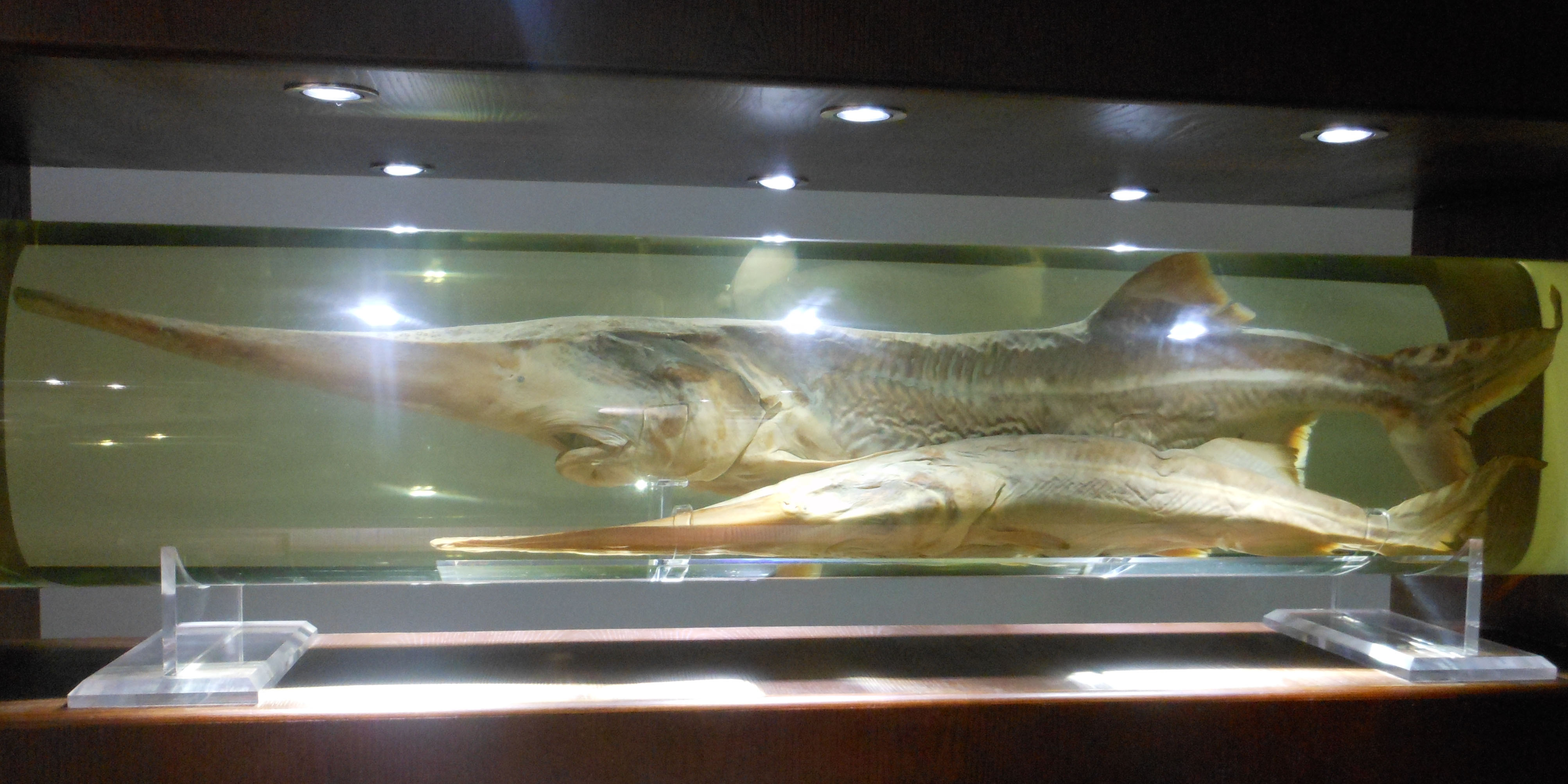The Emperor’s fish, an extraordinary giant beast that had been seen in the waters of the great rivers for centuries, was dying. Until the day came when there was just one left. It was injured and the people tried desperately to save it. Emily Zhou reports.
THE WINTER OF 2003 was bitterly cold. A large crowd was gathering in Luolong Town (羅龍鎮) beside the Yangtze River. The helicopters were busy bringing medicine, making a tremendous roaring sound. Everyone present looked worried. This group of people were made up of a rescue team, local villagers and journalists. They were ready to rescue a precious creature in the river: an injured and pregnant Chinese paddlefish.
Why so much fuss over a fish?
EMPEROR’S FISH
The Chinese paddlefish is an extraordinary creature with a long and celebrated history.
It was a type of giant swordfish, with a long sharp snout, and sometimes grew up to three meters (ten feet) long. There have even been tales of longer ones, up to seven meters (23 feet) in length. And yet, despite its size, it is a river fish, not an ocean one. Imagine going for a soak in a brook and meeting such a fearsome creature, with its long, sword-like beak.

According to the Book of Rites (禮記), a ceremonial classic in ancient China, the paddlefish was the sacrificial offering reserved for royalty 3,000 years ago. It was the Emperor’s fish!
BAD FORTUNE
However, in the opinion of modern-day fishermen, the paddlefish had come to be considered an ominous creature to catch. Its curious appearance and the fact that it had no scales meant that catching it was taken as a sign of bad fortune.

But it is difficult to persuade a fisherman to give up his fish, even if it means bad luck. They would not put them back in the river, but cut off the long sharp “sword” and sell them as another species in the fish market.
Once plentiful, the species soon hit two huge problems. One was overfishing and the other was construction of dams – the fish normally travelled long distances for breeding purposes but found that their favorite routes were blocked.
The loss of numbers was spotted by fishermen and the creature was declared to be endangered, and then officially listed as a protected species. The Chinese people and government soon started to be actively concerned about the creature. But it was already too late – sightings had become rare.
RESCUE OPERATION

In January 2003, a fisherman accidentally caught a white paddlefish from the Yangtze River, and he noticed a 10-centimenter-long wound on its back.
The people snapped into action.
This was the Emperor’s fish, after all! And maybe the last one.
The rescue team made a simple stretcher with a piece of cloth and two wooden sticks to move the fish close to the shore. Using modern medicine and sutures, they sewed up the wound.
They also used sonar to trace its movements to make sure it was recovering well – and could be recaptured for further treatment.
On January 27, an expert gave the last injection in its medical procedure, and watched it swimming cheerfully away to the deep river. “It had a gray back and a belly in light pink, just like an elf of the water,” the expert said.

However, three days after the paddlefish went back to the river, the tracking boat hit a rock, and the sonar system stopped working. The experts just had to hope that it was continuing in good health.
END OF THE LINE
That fish, it seems, was never seen again, which was worrying news. But even more worrying was the fact that no paddlefish was known to have been seen again. That fish may have been the very last one.
Experts said it had likely gone extinct some time between 2003 and 2010, but remain hoping for sightings after that. There were none. On July 21, 2022, the International Union for the Conservation of Nature and Natural Resources announced that the Yangtze white paddlefish was officially extinct.
The Emperor’s fish swam into history.

NEW AWARENESS
On a positive note, stories like this have made both the people and the authorities in China hyper-aware of conservation challenges, and there’s a widespread acknowledgement of the need to protect endangered species now.
And humanity may have caused its extinction, but at least human beings certainly gave a lot of care and loving attention to the very last Yangtze paddlefish to exist.
Image at the top is artwork representing a paddlefish, and is based on an image by David Clode/ Unsplash
